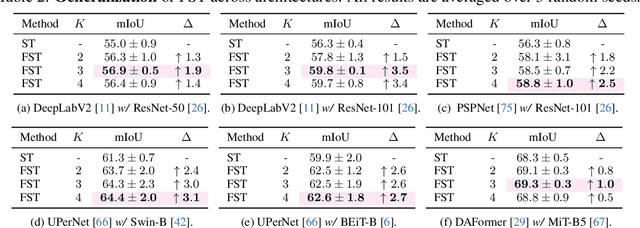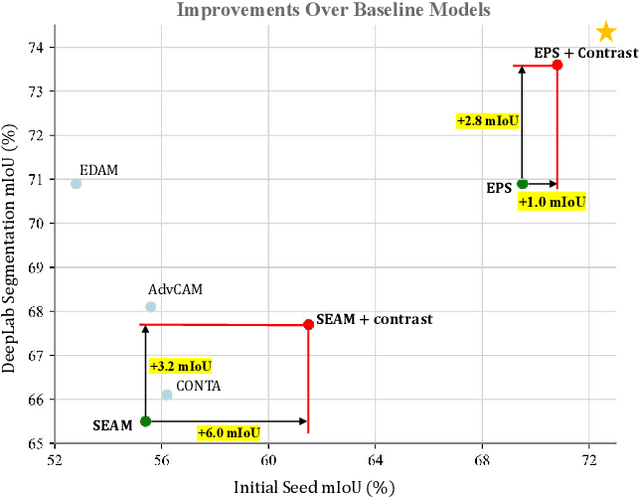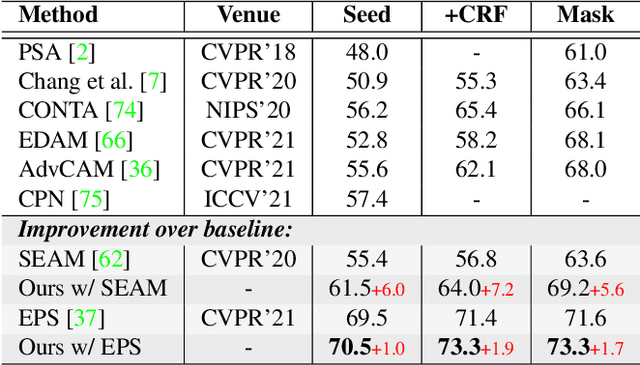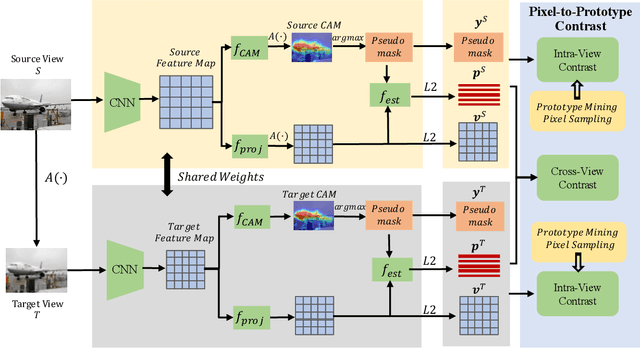Ye Du
A Survey of Scientific Large Language Models: From Data Foundations to Agent Frontiers
Aug 28, 2025Abstract:Scientific Large Language Models (Sci-LLMs) are transforming how knowledge is represented, integrated, and applied in scientific research, yet their progress is shaped by the complex nature of scientific data. This survey presents a comprehensive, data-centric synthesis that reframes the development of Sci-LLMs as a co-evolution between models and their underlying data substrate. We formulate a unified taxonomy of scientific data and a hierarchical model of scientific knowledge, emphasizing the multimodal, cross-scale, and domain-specific challenges that differentiate scientific corpora from general natural language processing datasets. We systematically review recent Sci-LLMs, from general-purpose foundations to specialized models across diverse scientific disciplines, alongside an extensive analysis of over 270 pre-/post-training datasets, showing why Sci-LLMs pose distinct demands -- heterogeneous, multi-scale, uncertainty-laden corpora that require representations preserving domain invariance and enabling cross-modal reasoning. On evaluation, we examine over 190 benchmark datasets and trace a shift from static exams toward process- and discovery-oriented assessments with advanced evaluation protocols. These data-centric analyses highlight persistent issues in scientific data development and discuss emerging solutions involving semi-automated annotation pipelines and expert validation. Finally, we outline a paradigm shift toward closed-loop systems where autonomous agents based on Sci-LLMs actively experiment, validate, and contribute to a living, evolving knowledge base. Collectively, this work provides a roadmap for building trustworthy, continually evolving artificial intelligence (AI) systems that function as a true partner in accelerating scientific discovery.
ADAgent: LLM Agent for Alzheimer's Disease Analysis with Collaborative Coordinator
Jun 16, 2025Abstract:Alzheimer's disease (AD) is a progressive and irreversible neurodegenerative disease. Early and precise diagnosis of AD is crucial for timely intervention and treatment planning to alleviate the progressive neurodegeneration. However, most existing methods rely on single-modality data, which contrasts with the multifaceted approach used by medical experts. While some deep learning approaches process multi-modal data, they are limited to specific tasks with a small set of input modalities and cannot handle arbitrary combinations. This highlights the need for a system that can address diverse AD-related tasks, process multi-modal or missing input, and integrate multiple advanced methods for improved performance. In this paper, we propose ADAgent, the first specialized AI agent for AD analysis, built on a large language model (LLM) to address user queries and support decision-making. ADAgent integrates a reasoning engine, specialized medical tools, and a collaborative outcome coordinator to facilitate multi-modal diagnosis and prognosis tasks in AD. Extensive experiments demonstrate that ADAgent outperforms SOTA methods, achieving significant improvements in accuracy, including a 2.7% increase in multi-modal diagnosis, a 0.7% improvement in multi-modal prognosis, and enhancements in MRI and PET diagnosis tasks.
Pixel-Level Domain Adaptation: A New Perspective for Enhancing Weakly Supervised Semantic Segmentation
Aug 04, 2024



Abstract:Recent attention has been devoted to the pursuit of learning semantic segmentation models exclusively from image tags, a paradigm known as image-level Weakly Supervised Semantic Segmentation (WSSS). Existing attempts adopt the Class Activation Maps (CAMs) as priors to mine object regions yet observe the imbalanced activation issue, where only the most discriminative object parts are located. In this paper, we argue that the distribution discrepancy between the discriminative and the non-discriminative parts of objects prevents the model from producing complete and precise pseudo masks as ground truths. For this purpose, we propose a Pixel-Level Domain Adaptation (PLDA) method to encourage the model in learning pixel-wise domain-invariant features. Specifically, a multi-head domain classifier trained adversarially with the feature extraction is introduced to promote the emergence of pixel features that are invariant with respect to the shift between the source (i.e., the discriminative object parts) and the target (\textit{i.e.}, the non-discriminative object parts) domains. In addition, we come up with a Confident Pseudo-Supervision strategy to guarantee the discriminative ability of each pixel for the segmentation task, which serves as a complement to the intra-image domain adversarial training. Our method is conceptually simple, intuitive and can be easily integrated into existing WSSS methods. Taking several strong baseline models as instances, we experimentally demonstrate the effectiveness of our approach under a wide range of settings.
CMViM: Contrastive Masked Vim Autoencoder for 3D Multi-modal Representation Learning for AD classification
Mar 25, 2024Abstract:Alzheimer's disease (AD) is an incurable neurodegenerative condition leading to cognitive and functional deterioration. Given the lack of a cure, prompt and precise AD diagnosis is vital, a complex process dependent on multiple factors and multi-modal data. While successful efforts have been made to integrate multi-modal representation learning into medical datasets, scant attention has been given to 3D medical images. In this paper, we propose Contrastive Masked Vim Autoencoder (CMViM), the first efficient representation learning method tailored for 3D multi-modal data. Our proposed framework is built on a masked Vim autoencoder to learn a unified multi-modal representation and long-dependencies contained in 3D medical images. We also introduce an intra-modal contrastive learning module to enhance the capability of the multi-modal Vim encoder for modeling the discriminative features in the same modality, and an inter-modal contrastive learning module to alleviate misaligned representation among modalities. Our framework consists of two main steps: 1) incorporate the Vision Mamba (Vim) into the mask autoencoder to reconstruct 3D masked multi-modal data efficiently. 2) align the multi-modal representations with contrastive learning mechanisms from both intra-modal and inter-modal aspects. Our framework is pre-trained and validated ADNI2 dataset and validated on the downstream task for AD classification. The proposed CMViM yields 2.7\% AUC performance improvement compared with other state-of-the-art methods.
BiSVP: Building Footprint Extraction via Bidirectional Serialized Vertex Prediction
Mar 01, 2023Abstract:Extracting building footprints from remote sensing images has been attracting extensive attention recently. Dominant approaches address this challenging problem by generating vectorized building masks with cumbersome refinement stages, which limits the application of such methods. In this paper, we introduce a new refinement-free and end-to-end building footprint extraction method, which is conceptually intuitive, simple, and effective. Our method, termed as BiSVP, represents a building instance with ordered vertices and formulates the building footprint extraction as predicting the serialized vertices directly in a bidirectional fashion. Moreover, we propose a cross-scale feature fusion (CSFF) module to facilitate high resolution and rich semantic feature learning, which is essential for the dense building vertex prediction task. Without bells and whistles, our BiSVP outperforms state-of-the-art methods by considerable margins on three building instance segmentation benchmarks, clearly demonstrating its superiority. The code and datasets will be made public available.
Learning from Future: A Novel Self-Training Framework for Semantic Segmentation
Sep 18, 2022



Abstract:Self-training has shown great potential in semi-supervised learning. Its core idea is to use the model learned on labeled data to generate pseudo-labels for unlabeled samples, and in turn teach itself. To obtain valid supervision, active attempts typically employ a momentum teacher for pseudo-label prediction yet observe the confirmation bias issue, where the incorrect predictions may provide wrong supervision signals and get accumulated in the training process. The primary cause of such a drawback is that the prevailing self-training framework acts as guiding the current state with previous knowledge, because the teacher is updated with the past student only. To alleviate this problem, we propose a novel self-training strategy, which allows the model to learn from the future. Concretely, at each training step, we first virtually optimize the student (i.e., caching the gradients without applying them to the model weights), then update the teacher with the virtual future student, and finally ask the teacher to produce pseudo-labels for the current student as the guidance. In this way, we manage to improve the quality of pseudo-labels and thus boost the performance. We also develop two variants of our future-self-training (FST) framework through peeping at the future both deeply (FST-D) and widely (FST-W). Taking the tasks of unsupervised domain adaptive semantic segmentation and semi-supervised semantic segmentation as the instances, we experimentally demonstrate the effectiveness and superiority of our approach under a wide range of settings. Code will be made publicly available.
Weakly Supervised Semantic Segmentation by Pixel-to-Prototype Contrast
Oct 14, 2021



Abstract:Though image-level weakly supervised semantic segmentation (WSSS) has achieved great progress with Class Activation Map (CAM) as the cornerstone, the large supervision gap between classification and segmentation still hampers the model to generate more complete and precise pseudo masks for segmentation. In this study, we explore two implicit but intuitive constraints, i.e., cross-view feature semantic consistency and intra(inter)-class compactness(dispersion), to narrow the supervision gap. To this end, we propose two novel pixel-to-prototype contrast regularization terms that are conducted cross different views and within per single view of an image, respectively. Besides, we adopt two sample mining strategies, named semi-hard prototype mining and hard pixel sampling, to better leverage hard examples while reducing incorrect contrasts caused due to the absence of precise pixel-wise labels. Our method can be seamlessly incorporated into existing WSSS models without any changes to the base network and does not incur any extra inference burden. Experiments on standard benchmark show that our method consistently improves two strong baselines by large margins, demonstrating the effectiveness of our method. Specifically, built on top of SEAM, we improve the initial seed mIoU on PASCAL VOC 2012 from 55.4% to 61.5%. Moreover, armed with our method, we increase the segmentation mIoU of EPS from 70.8% to 73.6%, achieving new state-of-the-art.
Visual Grounding with Transformers
May 10, 2021



Abstract:In this paper, we propose a transformer based approach for visual grounding. Unlike previous proposal-and-rank frameworks that rely heavily on pretrained object detectors or proposal-free frameworks that upgrade an off-the-shelf one-stage detector by fusing textual embeddings, our approach is built on top of a transformer encoder-decoder and is independent of any pretrained detectors or word embedding models. Termed VGTR -- Visual Grounding with TRansformers, our approach is designed to learn semantic-discriminative visual features under the guidance of the textual description without harming their location ability. This information flow enables our VGTR to have a strong capability in capturing context-level semantics of both vision and language modalities, rendering us to aggregate accurate visual clues implied by the description to locate the interested object instance. Experiments show that our method outperforms state-of-the-art proposal-free approaches by a considerable margin on five benchmarks while maintaining fast inference speed.
Variance Loss: A Confidence-Based Reweighting Strategy for Coarse Semantic Segmentation
Sep 11, 2020



Abstract:Coarsely-labeled semantic segmentation annotations are easy to obtain, but therefore bear the risk of losing edge details and introducing background noise. Though they are usually used as a supplement to the finely-labeled ones, in this paper, we attempt to train a model only using these coarse annotations, and improve the model performance with a noise-robust reweighting strategy. Specifically, the proposed confidence indicator makes it possible to design a reweighting strategy that simultaneously mines hard samples and alleviates noisy labels for the coarse annotation. Besides, the optimal reweighting strategy can be automatically derived by our Adversarial Weight Assigning Module (AWAM) with only 53 learnable parameters. Moreover, a rigorous proof of the convergence of AWAM is given. Experiments on standard datasets show that our proposed reweighting strategy can bring consistent performance improvements for both coarse annotations and fine annotations. In particular, built on top of DeeplabV3+, we improve the mIoU on Cityscapes Coarse dataset (coarsely-labeled) and ADE20K (finely-labeled) by 2.21 and 0.91, respectively.
 Add to Chrome
Add to Chrome Add to Firefox
Add to Firefox Add to Edge
Add to Edge